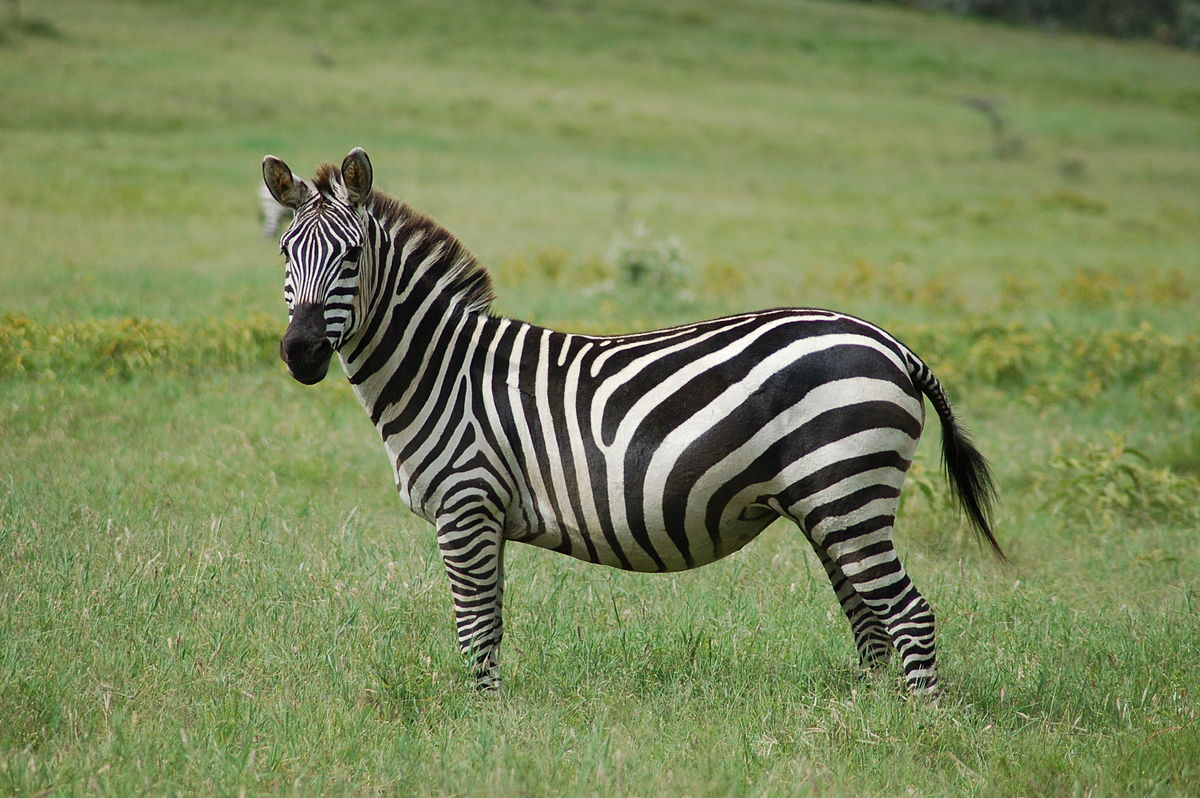zoomacademia.com – Zebras are some of the most recognizable animals in the world, known for their striking black-and-white stripes and their wild, majestic presence across the plains of Africa. But beyond their eye-catching appearance, zebras have complex social structures, surprising adaptations, and a variety of unique traits that make them one of the animal kingdom’s most interesting creatures. Here, we’ll take a closer look at zebras’ physical characteristics, social behavior, and the threats they face in the wild.
Unique Physical Traits: Why Stripes?
One of the most intriguing aspects of zebras is their stripes, which vary in pattern and width between individuals and even species. Scientists have long debated the purpose of these stripes, and multiple theories exist. Some believe that stripes provide camouflage by creating an optical illusion that confuses predators, especially when zebras move together in a group. Others suggest that the stripes may help regulate body temperature, as the contrasting colors create air currents along the skin. Additionally, research has shown that zebra stripes might serve as a deterrent for biting insects like flies, which are less attracted to striped surfaces.
Species and Habitats
There are three main species of zebra: the Plains Zebra (Equus quagga), the Mountain Zebra (Equus zebra), and the Grevy’s Zebra (Equus grevyi). Each species has unique physical traits and habits adapted to their specific habitats:
- Plains Zebra: The most widespread species, found in East and Southern Africa, Plains Zebras are the most social of the three. They live in large herds, often mingling with other animals like wildebeests.
- Mountain Zebra: Found in rocky, mountainous regions of southwestern Africa, this species has a distinctive dewlap – a flap of skin on its neck – and narrow stripes. They tend to live in smaller groups and are adept climbers.
- Grevy’s Zebra: The largest of the zebra species, Grevy’s Zebras are found in the arid grasslands of northern Kenya and Ethiopia. They have thinner stripes, a more donkey-like appearance, and tend to live in looser social structures compared to other zebras.
Social Structure and Behavior
Zebras are highly social animals that form complex social structures within their groups. Plains Zebras, for instance, live in family groups called harems, usually led by a dominant stallion with several mares and their offspring. These groups often join together in larger herds, which provides safety in numbers and increases their chances of survival. Communication is key within zebra herds, and they use a range of vocalizations, body language, and even facial expressions to signal danger, maintain cohesion, and establish dominance.
Grevy’s Zebras, on the other hand, tend to be less socially structured. Males are typically solitary and territorial, marking their territory with dung and urine to signal ownership. This social structure is likely due to the more sparse environment they inhabit, where resources are limited.
Diet and Adaptation
Zebras are herbivores that primarily graze on grasses, though they will also eat leaves, bark, and stems when grass is scarce. Their digestive systems are specially adapted for low-quality, coarse vegetation, which allows them to thrive in areas with sparse or nutrient-poor plant life. Zebras also migrate seasonally in search of fresh grazing lands, often moving alongside other herbivores such as wildebeests in massive migrations across the African plains.
Conservation and Threats
While zebras are known for their resilience and adaptability, they still face significant threats in the wild. Habitat loss due to agriculture and urban development, hunting, and climate change pose considerable risks to zebra populations. The Grevy’s Zebra, in particular, is endangered, with fewer than 2,500 individuals remaining in the wild. Conservation efforts include habitat protection, anti-poaching laws, and breeding programs to support population growth.
Community-based conservation projects have also been instrumental in protecting zebra habitats and fostering coexistence between zebras and local communities. These efforts aim to balance human development with wildlife preservation, ensuring that zebras and other iconic African animals continue to roam freely in their natural habitats.
Conclusion
Zebras are remarkable animals with a complex array of adaptations that allow them to survive and thrive in Africa’s diverse landscapes. Their unique appearance, social behavior, and resilience have made them a symbol of wild beauty. As conservation efforts continue, we can hope that future generations will be able to witness these striped wonders in their natural environments, embodying the spirit of the untamed African plains.







